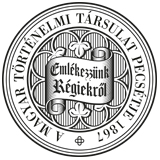Századok – 2015
2015 / 4. szám - KÖZLEMÉNYEK - Kökényesi Zsolt: Mise és presztízs. A magyar főpapok jelenléte és reprezentációja a bécsi udvarban 1711 és 1765 között
A MAGYAR FŐPAPOK A BÉCSI UDVARBAN 1711 ÉS 1765 KÖZÖTT 939 Dátum Főpap Alkalom Jelenlévők Helyszín Forrás Megjegyzés 1750. 11. 29. gr. Esterházy Imre nyitrai püspök Advent első vasárnapja, Szent András ünnepének előestje uralkodó, pápai nuncius, aranygyapjas lovagok Augustinerkirche WD 1750. 12. 02. 1755. 05. 13. gr. Esterházy Imre nyitrai püspok Mária Terézia (és Mária Krisztina) születésnapja uralkodói család, főrangú ünneplő társaság Schönbrunn kápolnája ÖStA HHStA Ha Zeremonialprotokolle Bd. 25. (1755-1756) 120. 1759. 05. 13. gr. Zichy Ferenc győri püspök Mária Terézia (és Mária Krisztina) születésnapja uralkodói család, főrangú ünneplő társaság Schönbrunn kápolnája ÖStA HHStA Ha Zeremonialprotokolle Bd. 27. (1759-1760) 76. 1763. 01. 10. gr. Batthyány József kalocsai érsek esküvő (Esterházy-Erdődy) őfelségéi, főnemesek Hofburg kápolnája WD 1763. 01. 12. 1764. 01. 23. gr. Batthyány József kalocsai érsek esküvő (Batthyány-Erdődy ) nincs megadva Hofburgban Batthyány főudvarmester szobája WD 1764. 01. 25. 1764. 05. 06. gr. Barkóczy Ferenc esztergomi érsek Szent István-rend alapítása őfelségéi, Szent István Rend tagjai, főrendek Augustienerkirche WD 1764. 05. 09. függ. 1765. 02. 03. gr. Batthyány József kalocsai érsek püspökszentelés (Pius Manzador címzetes zenggi püspök) “magasabb és alacsonyabb rendi személyek” Michaelerkirche WD 1765. 02. 06. Batthánynak asszisztált Koller veszprémi és Szalbek váci segédpüspök is 1765. 10. 15. gr. Batthyány József kalocsai érsek Mária Terézia-rend ünnepe őfelségéi, Mária Terézia-rend tagjai Hofburg kápolnája WD 1765. 10. 16. MASS AND PRESTIGE. THE PRESENCE AND REPRESENTATION OF HUNGARIAN PRELATES IN THE COURT OF VIENNA BETWEEN 1711 AND 1765 by Kökényest Zsolt (Summary) Despite its evident importance, the representation of eighteenth-century Hungarian prelates is an unresearched area, and the role they played in the court of Vienna is even less known. The present paper thus examines the presence of the higher layers of the Hungarian clergy in the imperial capital in the period extending from the peace of Szatmár to the adoption of archduke Joseph as co-ruler. In the first part a comparative analysis of Masses celebrated in the circle of the ruling family and their aristocratic guests is undertaken (before al on the basis of the volumes of Wienerisches Diarium and Zeremonialprotokoll), presenting quantitatively the various groups of prelates who played the most active role in terms of courtly presence. The second part of the paper, on the other hand, is an attempt to demonstrate the „beneficial” effect of presence at Vienna through an analysis of church careers (with regard to various political and official promotions as well). The analysis was mainly focussed on bishops who came from Hungarian aristocratic families, such as, among others, counts Imre Csáky, László Adám Erdődy, Imre Esterházy or Ferenc Zichy, while nationalised prelates, as, for instance bishop of Vác Altham, were left out of consideration.
